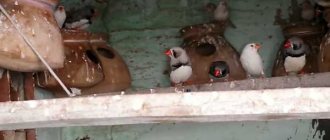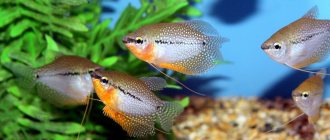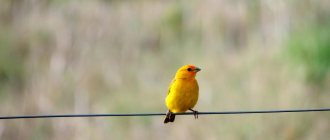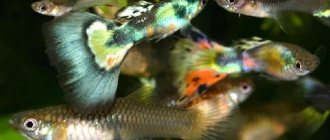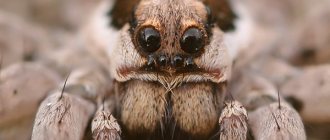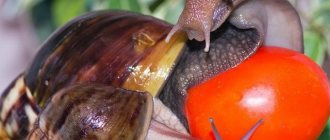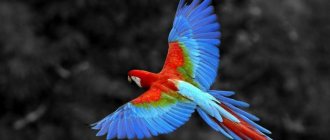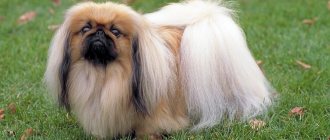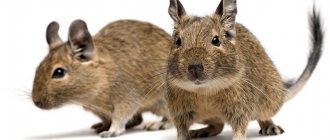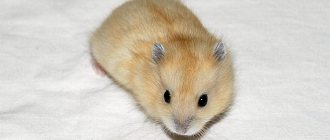Appearance and dimensions
Finches are birds from the family of finch weavers in the order Passeriformes. They are distinguished by their miniature size and weigh about 50 g with a body length of up to 15 cm. All finch birds have a thick, translucent triangular beak and smooth plumage, the color of which depends on the species and habitat.
In total, there are 38 species and 300 subspecies of these birds. The following types of finches deserve the most attention:
- Japanese.
This variety was artificially bred and is rarely found in the wild. Bronze manakins and the Chinese sparrow finch took part in its formation.
- Zebra.
The main habitat of representatives of this species, better known as the Australian sparrow finch, is Australia. Birds usually settle near water bodies, but are also found in city parks. They have a light ash-colored head and neck, a brownish back and a pale yellow belly. The bird's black tail is decorated with white spots, and there are triangular markings of brick-red color on the cheeks. The area between the beak and crop is decorated with black transverse stripes.
- Amadina Gulda.
This species was named after the wife of naturalist John Gould, who accompanied her husband on all his expeditions. The birds are painted in uniform bright colors with clearly defined boundaries.
- Tricolor parrot.
A shy bird with a thick, dark-colored beak, a crimson tail, a greenish back, a grassy belly and a blue face mask.
- Chinese.
A small, noisy bird that grows up to 10 cm. The Chinese finch sparrow inhabits mainly China, but is also found in some areas of India. It breeds well in captivity, but due to its habit of constantly making noise, it is not popular among lovers of ornamental birds.
Zebra finch
Tricolor Parrot Finch
Amadina Gulda
How to distinguish a male finch from a female
You can determine the gender and distinguish a male finch from a female by the vocal data of the birds. Melodic trills are produced only by males. You can also distinguish a male finch from a female by some external signs. Male individuals are larger in size and have brighter plumage.
Another distinguishing feature is the color of the birds’ beaks. In male birds it is coral, in female birds it is orange.
On a note. Males of some species of finches change color during the breeding season and become similar to females.
Who is the zebra finch
Finches are small, cheerful birds belonging to the weaver family.
Their homeland is distant Australia. They appeared in Europe and other countries of the world relatively recently (about two hundred years ago). These birds reproduce easily and are completely unpretentious in everyday life and in food, very active, mobile and have a ringing voice. But still, their unusually bright plumage .
Having decided to have these birds at home, keep in mind that the finch, although small, is a completely independent bird and you will not be able to pick it up, since it does not become attached to people at all.
According to external characteristics, finches are divided into three groups:
- Australian herbivores. They are distinguished by a variety of colors. Their bright plumage can be of five or more colors. Often males and females have the same color.
- African (wax-billed weavers). Their beak resembles wax in texture, hence the name.
- The third group has the least bright plumage. Birds can be coffee, cream or brown in color.
Since finches are flocking birds, it is better to keep them at home in groups of several , and if this is not possible, then at least a couple.
Varieties of finches
About thirty species of these birds are found in nature. Finches are very large birds (up to 20 cm in length).
Very loud and active. They were domesticated several centuries ago. They have a quarrelsome nature, so you should not place them in the same cage with smaller relatives. Drawings can show aggression towards their little brothers and injure them. Zebra finches . By nature, these birds are active and quite noisy. Caring for them is almost the same as for their relatives, however, there is one peculiarity: they reproduce very vigorously, therefore, in order to avoid exhaustion of the females, the process should be strictly controlled and the birds should not be allowed to nest frequently. Males of this species can be aggressive towards other birds.
Japanese finches . They look simple and inconspicuous and do not require special care. Birds have adapted to living in captivity, and in natural conditions they can no longer build nests and get food on their own. Their color varies from cream to dark brown. Japanese Crested Finches can be seen occasionally.
Other popular domesticated species of finches:
- parrots;
- diamond;
- red-throated.
Keeping at home
Amadins are fragile exotic birds that require appropriate care and maintenance. In rooms where birds live, it is recommended to maintain a constant temperature within 18-23 degrees Celsius. There should be no drafts, high humidity or dry air.
Japanese finches
Arrangement of the cage
Pet finch birds do not require much space and feel comfortable in a standard cage measuring 30x25x25 cm. A pair of birds need more space. Therefore, a house for two finch birds must have dimensions of at least 40x60x100 cm.
Important! The cage should have a rectangular or square shape. In a round house, the bird feels discomfort and may fall into a state of stress.
Amadins do not chew through the bars of the cage, so they can purchase a combined housing made of metal with wood or plastic. And to make cleaning more convenient in the house, it should be equipped with a retractable tray.
It is recommended to place inside the cage:
- closed drinking bowl;
- a couple of metal or ceramic feeders;
- several wooden perches with a diameter of 9 mm.
Care
Finches must be kept clean. In unsanitary conditions, birds run the risk of contracting the down-eater mite, which is dangerous not only for themselves, but also for people.
The birds' cage is kept in order every day, and once a month the finch's home is completely disinfected. First, the house is cleaned of dirt and dust, and then scalded with boiling water and treated with a special solution. After complete drying, the disinfectant is washed off with hot soapy water.
The finch birds themselves also need bath procedures. Therefore, a bath of clean water is placed in the cage in which the birds live. When the birds finish bathing, the container is removed and washed thoroughly so that a mucous coating does not form on its walls.
Care during shedding
Finches molt twice a year. Their change of plumage lasts for 20 days and greatly weakens the birds. During the molting period, finches lose their appetite and stop singing. They are subject to sudden mood swings and need special care.
To make it easier for finches to endure molting, they are provided with:
- at least 10 hours of daylight;
- daily bathing;
- mineral and vitamin supplements.
In the room where molting finches are kept, a constant air temperature of about 26-28 degrees and humidity of 60-70% are maintained.
Feeding
Finches are not picky birds; they do not require special nutrition. Their diet should be dominated by grain mixtures based on millet with the addition of the following ingredients:
- flax and meadow grass seeds;
- canary seed;
- crushed oats;
- hemp;
- rape.
Finches also eat raw vegetables, berries and herbs well. They are allowed to give nettle, dandelion and plantain leaves. But basil, onions and dill must be permanently excluded from the diet of your feathered charges.
To prevent finch birds from experiencing a shortage of valuable substances, boiled eggs and low-fat cottage cheese are introduced into their diet twice a week. During the nesting period, birds are additionally given insects, bloodworms and mealworms.
Light mode
Lighting greatly affects the well-being of birds and their ability to reproduce. For a comfortable life, birds need 13 hours of daylight. A deficiency of solar radiation leads to metabolic disorders and the development of rickets. Excess ultraviolet radiation causes depression in birds.
During the warm season, the cage with the birds is left on the balcony in the shade for several hours a day. During the cold months, an additional source of lighting is installed in the room in which the finches live.
Taming
Young finches get used to human society faster than adults with a mature character. For the taming process to be successful, you need to follow a few simple recommendations:
- The young bird is placed in a small cage with a folding top or an opening side wall.
- To prevent the finch from being injured or accidentally flying out of the window, its wings are clipped.
- The bird is carefully driven into the corner of the cage, a hand is offered and it is forced to jump on it.
- The hand on which the finch sits is carefully pulled out of the cage. If the bird gets scared and flies away, it is given the opportunity to calm down and after a few hours the attempt is repeated.
On a note. To make the finch feel safe outside the cage, a corner with several perches or a play stand is placed in the room where its house is located.
Lifespan and reproduction in captivity
At home, finch birds live 7-8 years. They breed easily in captivity and are ready to reproduce from 7-9 months. The selected pair is moved into a separate cage, which contains a nesting house and “building materials” in the form of dust, hay and twigs.
After courtship games and mating, the female finch climbs into the nest and lays a clutch of 2-5 white eggs. Both partners take turns incubating the future offspring. After 12-16 days, blind, naked and completely helpless chicks emerge from the eggs. On the third day they begin to grow fuzz and squeak. At 3 weeks of age, the young make their first attempts to fly out of the nest.
Bird food
When asked what to feed finches, the answer is standard – grains:
- Millet;
- Canary mixture;
- Oat groats;
- Flax-seed;
- Meadow grass seeds;
- Porridge (rice, millet, buckwheat).
They feed once a day, or rather, in the morning, pour the mixture into the feeder, about 1 teaspoon, and the birds themselves will eat as needed.
Ready-made food for finches
Don't forget to refresh the water in the morning. Finches are not prone to overeating and obesity, so you can add a little more if in doubt.
Also sometimes you need to feed with natural food (picture clickable):
Power modes
Sometimes you can even give live food - mealworms or bloodworms. Especially useful when feeding young animals.
How to choose a bird
To become the owner of a healthy and viable finch bird, you need to contact experienced breeders or specialized stores. When choosing, it is recommended to pay attention to the appearance and behavior of the proposed individuals. A healthy finch bird has:
- booming voice;
- springy, clear movements;
- light, slightly pinkish skin;
- moderately well-fed physique;
- dense plumage without signs of ticks and other parasites.
Amadins are small exotic birds with a lively temperament and variegated colors. Vocal songbirds are undemanding in everyday life and, with minimal care, will delight their owners with their presence for a long time.
Reproduction of finches
As far as is known, living in the natural environment, females choose the best and strongest males for mating. As for finches, they are not attracted to such natural selection. Female finches choose interesting, loving partners who are interested in the world around them. As a result of the scientists' research, the forced mating of these birds, although it produces offspring, but after the chicks are born, their parents are not interested in them, which leads to the death of the offspring.
Upon reaching 6 months of life, finches can already mate if the female and male are interested in each other. Moreover, in 1 year the female is able to lay eggs 3 times. In fact, more than 3 times, but experts do not recommend doing this, since the female may not be able to stand it. It is necessary to ensure that the female has a six-month break.
Interesting to know! The difference between zebra finches and Japanese finches is that zebra finches are ready to breed after six months, while Japanese finches are ready to breed only at 9 months.
During the period when the female and male hatch eggs, they do not need a lot of food, and when the chicks begin to be born, the parents should receive adequate nutrition. During this period, parents will benefit from sprouted grain. In addition, after the birth of the offspring, the cage must be placed in a well-lit place, but the cage should not be exposed to direct sunlight. It is also desirable that the birds feel comfortable, without excessive noise.
How to distinguish a female from a male
There are several ways to distinguish a male from a female by appearance. Each of them requires separate mention.
By the beak
Males have larger beaks and are usually more brightly and deeply colored than females.
By color
The characteristic color characteristics of males and females differ in different species of finches. For example, male red-headed finches have a red head, which distinguishes them from females. The male zebra finch is gray but has a brown and white marking on the neck. They have a zebra pattern on their chest in the form of alternating white and black stripes. The color of the females is different from the color of the males.
By singing
Representatives of the stronger sex usually sing much better than females. Males do this beautifully and for a long time, sometimes performing complex compositions. The sounds made by females are usually abrupt and quiet. This can hardly be called singing at all. So if an individual sings well, it is almost certainly a male.
The owner must decide for himself how to distinguish a male from a female. It is advisable to use more than one method.
How to tame?
To tame a finch who is not afraid of a person and sits freely on his hand, there are several rules:
- The owner should only tame his bird alone with it. If a person has several finches, the friends can be temporarily moved to another enclosure or cage. “Lessons” must take place daily. This is the only way the finch can fully get used to human hands.
- Immediately after purchase, veterinarians advise clipping the birds’ wings. This way they won’t fly out the window, and the owner won’t catch the finch around the room.
- For each correctly completed “lesson,” it is recommended to reward the bird with some kind of treat. For example, grains or berries.
- In order for the finch to start jumping onto a person’s hand, it must be driven into the corner of the cage - into a trap. The bird will most likely jump on your hand.
- Training can last from several weeks to several months. The main thing is that the finch is young. This will be easier to train.
After the finch has learned to jump on a person’s hand and is no longer afraid of its owner, it can sometimes be released to fly around the room, but be sure to keep an eye on the bird and close the windows and doors tightly.
Types of housing for keeping finches
First you need to decide where the finches will live. There are several options for placing these birds:
- cell;
- aviary;
- cage
The choice of housing for finches largely depends on how many individuals will live together. A regular small cage is suitable for keeping a couple. Aviaries are used for flocks.
Cages are designed for keeping and raising young animals.
Cell
Even if the future owner of the finch birds plans to keep them in a spacious enclosure in the future, a cage will still be needed. It is necessary for isolating and caring for sick individuals, as well as for the quarantine period when purchasing new feathered pets.
Pet stores offer a large selection of cages for keeping birds, but not every one is suitable for finches. Experienced owners agree that it is more convenient to care for birds in a rectangular-shaped dwelling, which is made of a metal lattice.
To keep one pair of finches, a cage with dimensions exceeding 50x30 cm is suitable, this is the minimum size. The height should not be less than 50 cm.
Attention! Keeping finches in close quarters is unacceptable - they can damage the plumage. In addition, in cramped conditions, birds become less mobile and quickly gain weight. This negatively affects the health of finches and their ability to reproduce.
When purchasing a cage for finches, you should choose a design with a removable plastic tray. It is more convenient to maintain such a home - clean and wash it. You should pay attention to the distance between the rods. It should not exceed 1 cm. It is good if the grille is covered with enamel.
The cage for finches must be equipped with a securely closing door. It's better if there are several of them. This makes it much more convenient to care for the nesting house and clean the feeder and drinking bowl.
Display cages are very popular. They resemble a box, the sides of which are made of wood or plastic. The front wall is made of lattice or plexiglass. The second option is less preferable, since air exchange is difficult in it.
Aviary
To keep several finches, it is recommended to equip an aviary, especially if they have a pronounced territorial instinct. The minimum size of the structure for 4 or more birds is 2x1.5x1.5 m.
To ensure that finches use all the available space, you need to place feeders and perches correctly. Food containers are fixed in the lower part of the enclosure, and additives are fixed in the upper part.
Zadok
The cage is smaller in size than the enclosure, but still quite spacious, so it is quite suitable for keeping a pair of opposite-sex individuals. It can also be used to care for finches chicks that have been separated from their parents. The cage has a rectangular shape.
The average size of the structure is 100x60x40 cm.
When choosing a cage, preference should be given to one that is equipped with a damper at the bottom. This will prevent the finches from flying out of the tray slot during cleaning.
Microclimate
It is advisable to clean the finches' cage every 4-5 days, otherwise the filler will become a breeding ground for bacteria. Dirty sand is poured out, the tray is cleaned with a scraper and washed with hot water. The finch's feeder and drinker are emptied and scalded with boiling water. If necessary, clean the grate with a brush.
Attention! Every 3-4 weeks it is recommended to treat the cage and tray with a choramin solution at a concentration of 2%.
Light mode
The suitable duration of daylight hours for finches is 12-13 hours. Therefore, it is advisable to place the enclosure in a room with a lot of natural light. Its deficiency will lead to health problems for birds.
When keeping finches in a private house in the summer, it is worth taking them out into the yard and leaving them in openwork partial shade on the street. This will help avoid the development of rickets. In autumn and winter, when twilight comes early, you need to use special lamps to increase daylight hours.
Humidity and temperature
It is important to maintain the correct temperature in the zoo corner. The thermometer should not fall below +16 and rise above +25 degrees. Extreme heat reduces appetite and slows down metabolic processes in birds.
To ensure good maintenance and proper care of finches at home, you need to constantly monitor the level of humidity in the room. It should be in the range of 55-70%. Excessive dry air leads to brittle feathers and flaking of the skin.
Due to low humidity, finches more often suffer from respiratory diseases, as the mucous membranes of the nose and mouth dry out.
